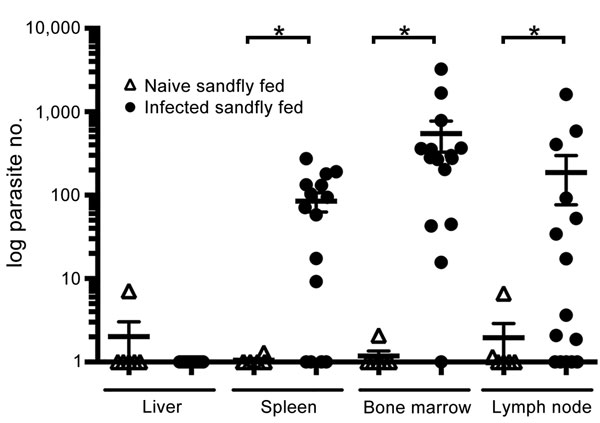Volume 21, Number 12—December 2015
Dispatch
Vectorborne Transmission of Leishmania infantum from Hounds, United States
Figure 2

Figure 2. Visceralization of Leishmania infantum from US foxhounds, transmitted by sandflies into hamsters. Leishmania spp.–specific quantitative PCR was performed, and parasite load was calculated from a standard curve. Horizontal bars indicate mean values for 3 experiments run in duplicate. Statistical significance was determined by 1-way analysis of variance with Bonferroni posttest between 6 naive and 15 infected groups, by tissue type. Error bars indicate ± SEM. *p<0.05.
Page created: November 17, 2015
Page updated: November 17, 2015
Page reviewed: November 17, 2015
The conclusions, findings, and opinions expressed by authors contributing to this journal do not necessarily reflect the official position of the U.S. Department of Health and Human Services, the Public Health Service, the Centers for Disease Control and Prevention, or the authors' affiliated institutions. Use of trade names is for identification only and does not imply endorsement by any of the groups named above.